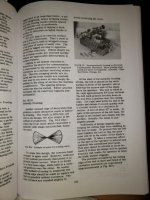I'dG84that
Plastic
- Joined
- May 24, 2020
- Location
- Kansas City
I've heard of a handful of different flaking/frosting patterns used primarily for decorative purposes but I'm struggling to find information on them. I believe what I'm looking for is known as "butterfly frosting" but unfortunately google's search results only turn up pictures of cupcakes. The specific machine in question is an old Hardinge Cataract lathe. Can someone confirm that this is butterfly flaking or explain how this pattern was produced?






